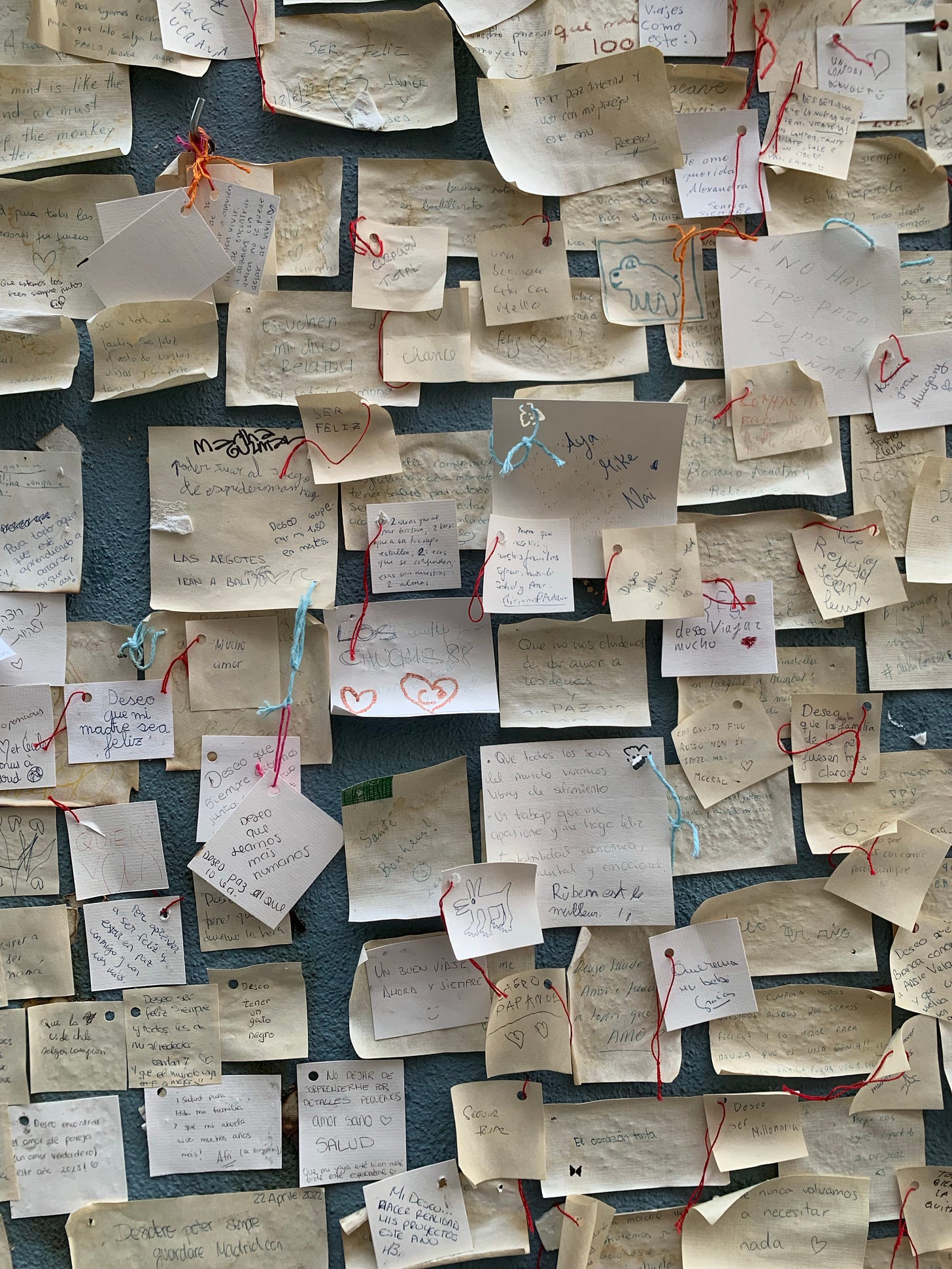Mythbusting the Secondhand Industry: What Vintage Dealers Want You to Know
based on responses from the 2025 Secondhand Sellers Income Survey
This analysis represents independent first-of-its-kind research conducted by Pre-Loved. Your subscription supports independent journalism:
Earlier this week, we shared the findings from our first-of-its-kind 2025 Secondhand Sellers Income Survey. The response has been incredible so far — so many of you have been reaching out saying “finally, someone's talking about this!” Yeah, we are!!!
Personally, it’s given me real clarity on how we can start to create collective change in this industry through Pre-Loved. Take note: this is just the beginning!
In that first letter, we got into money — showing how vintage dealer earnings stack up across the industry. The goal being, if you can establish real financial benchmarks — benchmarks which vintage dealers have never had before — you can make informed decisions about your business.
Now, today, we’re myth-busting: tackling the irksome misconceptions you brought up again and again in those survey responses, in an attempt to bridge the gap between what people think vintage dealing is like, and what actual dealers say they really experience day-to-day.
Ummmm… it’s juicy! Let’s dig in.
Myth #1: "It's Easy Money"
“Oh, you should just sell some of your old clothes online! It's basically passive income.”
If you're a vintage dealer, I bet you just felt your eye twitch.
One dealer who’s been at this work for over a decade put it like this: “Someone once told me this was 'passive income' — if they only knew the blood, sweat, and tears that go into it…” Another wrote in: “People think we just throw stuff online and money appears. Ha!”
The reason I think this misconception runs deep, is because while 58% of shoppers now buy secondhand, only 27% have actually resold their own clothes. That’s a lot of people who have no idea what goes into the process. As another dealer explained: “people tout selling your old clothes as a super easy way to make side money and declutter your closet, but making a good listing and selling it takes a LONG time.”
As a shopper, when you browse curated vintage, you see the final product — beautiful garment, ready-to-wear, with a fascinating story. What you don’t see is all the mess that happened before that item reached you: the sourcing trips where someone digs through hundreds of pieces to find, like, three good ones? The late-night research sessions, all the careful cleaning (omg, the laundry!) and repairs, or the photography set-up that’s constantly taking over your living room so you’re ready to go when it’s time to capture that perfect afternoon light for product photos.
Ready to mythbust?
Several of our surveyed dealers said they’re ready to tackle this misconception head-on. One wants to “create more awareness through social media” and be “honest and open with people about everything that's behind the scenes” to educate their customers about “why they are paying what they are paying for the garments.”
And we love that — we have ideas!
Try ‘day-in-the-life’ content: examples here, here, and here. Try documenting your entire process — from find to final listing. Show the hours it takes to research, clean, photograph, measure, and list a single piece. Film yourself sourcing, digging past all the rejected items — and explain why most clothing doesn't make the cut.
Show what goes into that before and after transformation: examples here and here. Showcase the pieces that needed mending, cleaning, or repairs, demonstrating all the the care and work that goes into making each item look perfect for the final customer.
Myth #2: "Vintage Dealers Are Getting Rich"
Look no further than the results of the 2025 Secondhand Sellers Income Survey — this is no get-rich-quick scheme. On the contrary, we found 81% of full-time dealers earn below living wage for their area, even those working 80+ hour weeks.
One such NYC-based dealer, who works 80+ hours per week, wrote that the biggest misconception is “that we’re all getting rich. none of us are getting rich lol.”
Another dealer who earns $100,000+ in gross profits but takes home less than $10,000 explained: “People think when we resell items for more than what we paid, we're making just a ton of money and that there aren’t a million other costs.”
The average shopper thinks of thrift store prices, and then they picture any “markup” as pure profit.
What they don’t see are all the hidden costs eating into that margin — storage space (dealers mentioned this one barrier is even keeping them from moving out of their family home!), gas for sourcing trips, booth fees, photography equipment, packaging materials, platform fees, insurance, business licenses. The list goes on.
As one dealer put it: “People think we simply buy things cheaply and flip them fast for a big markup. While some items have great margins, there's so much time and work that goes into sourcing and cleaning the majority of items.”
Let’s shift mindsets:
Talk openly about money. Our survey found that two-thirds of vintage dealers never discuss money — including pricing, profits, or salaries. When we don't talk about the financial reality, myths persist. When we normalize these conversations, we all get better at valuing our work appropriately.
Do some soul-searching. One dealer beautifully captured the complexity here: “My mother always said, 'money isn't the only currency.' I could not love my work much more than I do, so that counts.” And that’s real — passion and fulfillment matter enormously, only you can assess that value.
Myth #3: "Vintage Should Be Cheap"
“This is overpriced! I could get that at Goodwill for $3!”
I know you’ve heard this one — it came up in almost every dealer’s survey responses, and I can feel the frustration from here...
“SO many people gawk at the prices that we charge, because they don't consider all of the time and labor that goes into our business,” wrote a dealer from a major metropolitan area. Indeed, no misconception seems to frustrate dealers more than customers expecting rock-bottom prices for carefully curated, researched, and restored vintage pieces.
As another full-time dealer explained: “Curated vintage is not cheap. It's not a thrift store. The items are cleaned, mended, and researched. Just because someone likes to shop at Goodwill doesn't mean they know what they're doing when dealing with vintage and antique items.”
Honestly, I blame fast fashion here — for driving rock-bottom prices that have warped everyone’s expectations around what clothing should actually cost.
How do we fix this?
Track your actual expenses. One dealer said they made a profit & loss spreadsheets and that “by tracking my expenses and income I can now make informed business decisions.”
Build confidence in your pricing. Connect with other dealers who’ve learned not to underprice their items. They’re out there — one dealer wrote in: “I’ve learned there is a buyer out there for each item!” And share your own success stories, too!
Remind people that quality is a perk! When you’re in-person with customers have conversations about good quality and construction. Customers are more likely to understand the high-quality difference when they can feel it.
Stop competing on price and start competing on expertise. Market yourself as a curator, historian, expert, and specialist rather than just a “seller.” Help customers understand they’re not just buying clothes, they’re buying your expertise, taste, curation, and care work — and your work deserves respect.
Myth #4: "Resellers Are Harming the Community"
This one really gets to me because I've been writing about the scarcity mindset issue for years now. At first, I thought it was based on a fundamental misunderstanding of how much clothing exists in the world…
But by now, you’ve heard this all before: Americans throw away 81 pounds of clothing, per person, each year. Thrift stores receive far more donations than they can actually process — and only 20% of donated clothes actually gets sold in-store. The rest moves along the secondhand supply chain, and much of it is eventually exported to countries in the Global South. The problem isn’t scarcity. It’s excess.
Yet — you said it! — people still think: “That resellers are 'taking all the good stuff.' When actually there's more than enough secondhand clothes to go around, and resellers are giving them a new life.” Another said: “It’s a scarcity mindset. That people selling vintage are ‘stealing’ when there is more than enough to go around.”
And one seller, with 20+ years of experience, put it: “We have soooooo much stuff! Sellers can work together! We all have different audiences.”
And you know what? Community is something that’s working for vintage sellers. When we asked how dealers are feeling about “finding community,” 37% of respondents said they're feeling very good about it, compared to only 11% who felt very good about their income, for example.
So, the next time you see a TikTok video about “the Depop girlies taking all the good stuff at the thrift store,” put down your phone, and lean into your community for support.
Here’s how dealers are building abundance:
Join supportive communities: connect with (or form!) a local vintage seller meetup where dealers share knowledge and support each other.
Collaborate, don’t compete: cross-promote each other's work, and remember that “we all have different audiences.”
Educational Advocacy: Connect with your local thrift stores and work together to explain how resellers rescue items from landfills, give clothing new life cycles, and benefit local communities.
Myth #5: "It's Not Real Work"
It hurts to have your sense of purpose and legitimacy questioned — especially when dealers are putting in 80+ hour weeks building these businesses! And yet, one dealer who balances running both a brick-and-mortar store and pop-up markets wrote that people think “it's an easy job or not a real job.”
This dismisses the incredibly diverse skill-set dealers need: business management, fashion history knowledge, photography, marketing, customer service, and often hands-on restoration work. Dealers are creatives and entrepreneurs, running complex operations that require significant expertise, people-skills, time investment, and business smarts.
As one dealer put it: “Sourcing, mending, researching, and caring for items takes work, even if it is fun!”
How to shift the conversation:
You’re a professional! Write down your professional bio with all your actual qualifications — years of experience, specialized knowledge areas, skills you've developed. Really own them. You've earned every bit of that expertise.
Network like the entrepreneur you are. Make a point to get yourself in the room with other business owners. When you have the space to “talk shop,” with your peers, you’ll feel affirmed and re-invigorated.
The Bottom Line: Respect the Craft
What comes through loud and clear in these responses is that this industry is far more complex, labor-intensive, and skills-based than most people realize.
So, the next time you shop secondhand, remember this: you’re not just buying old clothes. You’re supporting the expertise, labor, and passion of someone who has dedicated themselves to extending the life of quality garments, in an industry that’s anything but easy.
And to the dealers reading this — keep doing what you're doing. Your work matters, your expertise has value, and this community we’re building together is something special.
Thanks for reading and supporting Pre-Loved! If you took something away from this letter, please share your insights with a friend! ♻️
Find me across the internet on Instagram, TikTok, and Threads! 💛 - Emily
PS: Got a tip for Pre-Loved? 💌 Launching a new resale innovation? Solving a piece of the circular fashion puzzle? Have a buzzy piece of vintage news you want readers to know about? Put a tip in my inbox: prelovedpodpr@gmail.com. 📥










